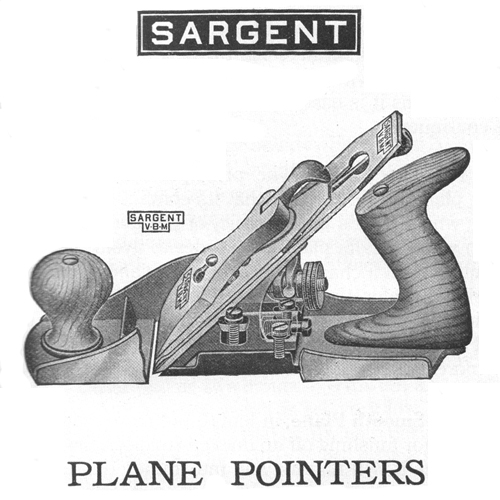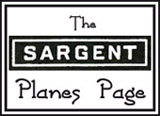
The plane is essentially a finishing tool and while it is adapted for use in bringing down wood surfaces to a desired thickness, owing to its construction it will produce this result gradually as compared with a hatchet or mattock. For this reason it is the last tool to be used in finishing a wood surface.
The two types of planes most used are Bench Planes and Block Planes. The former may be divided into two classes. Those with
A.– Wood Bottoms
B.– Iron Bottoms
The Wood Bottom Plane is preferred by many, owing to its comparative lightness and to the fact that in its contact with wood it creates less friction. For both reasons it is easier to work with where the work is continuous.
The Iron Plane. The principal advantage of the iron plane lies in the fact that its contact surfaces wear well, which avoids the necessity of frequent “truing-up” as in wood bottom planes. In order to avoid the friction mentioned as a characteristic of iron planes some woodworkers prefer the corrugated bottoms, the theory of which being that the grooves permit the passing of air and so serve to cool off the heated metal. The iron plane is more readily adjusted than the wood bottom plane.
The Smooth Plane, in length not more than 12 in., is adapted for finishing off an uneven surface. Owing to its small size it will find its way into minor depressions of the wood without taking off much material. In this it differs from the Jointer Plane, which is primarily for use on large areas. Both types of planes are finishing planes, but, of the two, the jointer is for finer work.
The Jack Plane (14 in. or 15 in. in length) is for coarse work and is to be used either on rough surfaces or where a considerable chip is to be taken off. It is long and heavy enough to make it a powerful tool.
The Fore Plane is for the same purpose as the Jointer in fine finishing. Owing to the fact that it is shorter (length 18 in.) than the Jointer it is easier to handle, especially for a journeyman carpenter. It may be used also as a Jack Plane. Where a carpenter has not both a Jack and a Jointer he can make a Fore Plane serve for both although it will not give as good service as either of the other two in the work for which they are adapted.
The Jointer Plane may be anywhere from 20 in. to 30 in. in length. Its great length and weight keep the cutter from tearing the wood and with the cutter set fine it is the plane for obtaining the smoothest finishes. As its name indicates, it will take down, better than other types of planes, two wood surfaces that are to be brought together where a very close fit is required.
The Block Plane — 7 in. or less — is for end work. It is built to hold in the palm of the hand and may be used with either one or two hands. With the low angle block plane, because the cutter is set very low, a sheering cut is secured, which makes its use desirable in cross-grained wood, as the cutter is not as apt to follow and split the grain.
For information as to the purpose of any other planes shown in this catalogue, write to Sargent & Co., New York, addressing the Tool Department.
Your attention is called to the finish on Sargent Iron Bench Planes. Compare it with other makes and notice:
1. The improved effect of the red handle and knob which makes a handsome contrast with the polished and japanned surfaces.
2. The high luster of polished surfaces
3. The careful fit of each and every part.
4. The smoothness of the japanning.
The cutter in Sargent Bench Planes is made of imported Sheffield Steel (and is number 12 gauge). This is twi gauges heavier than formerly. The additional weight insures no chatter even when the plane is used on cross-grained hard wood. The cutter is ground sharp and hand-honed, ready for use. Contact surfaces an the frog and bottom are milled, making a firm double seat.
On the Sargent wood bottom planes observe that:
1. The bottom surface is highly finished.
2. The wood is quarter-sawed.
3. The frog is set into the iron framework with machine screws. These will not work loose. On other makes wood screws hold the frog to the wood bottom.
On Sargent Block Planes with the adjustable mouth feature note the positive movement of the throat-piece, which is locked in position by the thumb-screw. Compare the facility of the adjustment with that of other makes. Note the strong construction of the clamp, especially of the Knuckle Joint Planes, 4306, 4307, 5306 and 5307. Here the clamp is of wrought steel and so positively cannot break.
Sargent Miscellaneous Planes embody many improved features of design and adjustment.

The above article taken from the 1911 Sargent catalogue (pages 3–6)





